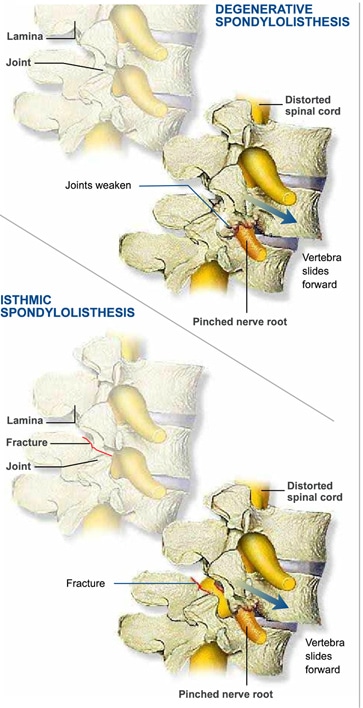Back Pain
WHERE BACK PAIN BEGINS
OVERVIEW
Vertebral discs are the spinal column’s shock absorbers. The discs cushion the vertebral bones and allow the spine to twist and bend. Vertebral discs are composed of two main parts, a soft inner nucleus (nucleus pulposis) and a tough, fibrous outer wall (annulus fibrosis).

- DISC WALL WEAKENS
Vertebral discs can be damaged by the normal wear of aging or by traumatic injury. Problems often begin when fibers in the outer wall crack and weaken. Radial tears form in and around sensitive nerve fibers in the disc wall. - NUCLEUS PUSHES THROUGH DISC WALL
The disc’s soft nucleus pushes through to the outer edge of the disc wall. This causes local back pain at the disc level. - RUPTURE PRESSES AGAINST NERVE ROOTS
As the herniation pushes out of the disc wall, disc material may press against the large nerve roots. This can result in pain radiating down one or both legs.
CAUSES OF BACK PAIN
SOFT TISSUE INJURY — injury to the soft tissues — the muscle, tendons and ligaments — commonly referred to as a sprain/strain type injury. Although typically not as serious as other back injuries, this can cause significant pain and may take considerable time to heal.
DEGENERATIVE DISC DISEASE — a decrease in the thickness of the disc secondary to “wear and tear.” It is more common as we get older.
DISC BULGE — when the outer fibers of the disc weaken allowing the disc to extend past its natural boundaries.
HERNIATED DISC — when there is a break (tear) in the outer fibers of the disc which allows the soft gelatinous material to extend through this outer barrier. A disc bulge/herniation and/or arthritis can limit the amount of space that the spinal cord and the nerve roots occupy. Any inflammation in this area can further crowd the nerve tissue causing nerve irritation and pain. Continued compression of the nerve can result in nerve damage if not relieved.
ARTHRITIS — inflammation (swelling) of a joint. The joint between two vertebrae facet joints, like other joints in the body, can develop arthritis which is painful and may limit the movement of the spine or cause instability. Arthritis can also develop around the area of the disc leading to similar problems.
